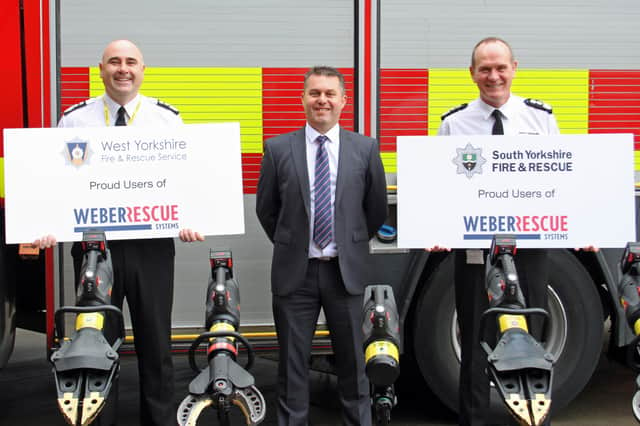Emergency services' £1.2 million cutting gear link-up "saves thousands"


South Yorkshire Fire and Rescue joined West Yorkshire Fire and Rescue Service in buying new tools to assist at traffic collisions.
They awarded a joint contract to Weber Rescue UK, spending £1.25 million on the battery-powered machinery.
Advertisement
Advertisement
The specialist gear is to be used at road traffic crashes to safely remove casualties from vehicles.
All appliances within both services are expected to carry the new model by next month.
These new tools are more powerful and have longer battery lives than older kit, helping to get wounded motorists out quicker.
As well as minimising costs, the joint purchase is set to save services time and make training and maintenance more efficient.
Advertisement
Advertisement
Bosses hope that standardising the gear across two services will make cross-border traffic crash responses quicker and more effective.
The procurement was led by South Yorkshire staff, while West Yorkshire directed research and development.
James Courtney, South Yorkshire’s chief fire officer, said: “This is a great investment in standardising operational equipment and will undoubtedly improve our response to rescue incidents.
“Collaborating on projects such as this presents us with a great opportunity to provide a more effective and efficient service to the people we serve.”
Advertisement
Advertisement
Police and fire service minister Nick Hurd added: “This kind of collaboration is great to see and the results are clear.
“I commend the fire chiefs in South Yorkshire and West Yorkshire for this project, and hope that this kind of closer working will become more widespread across our fire and rescue services.”
The joint purchase came after the publication of a 2016 Home Office report, which found that fire services were paying similar prices for equipment but buying separately — despite the benefits of buying together.